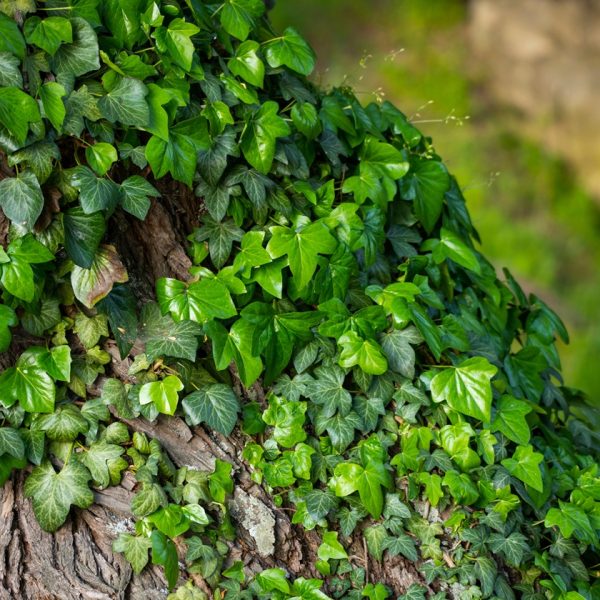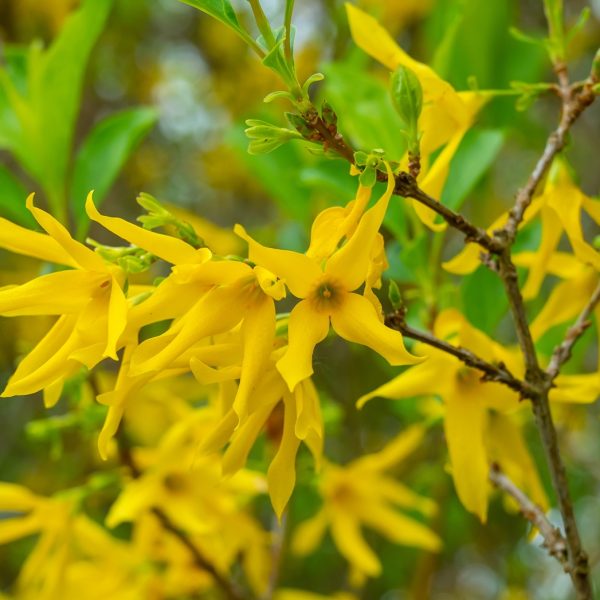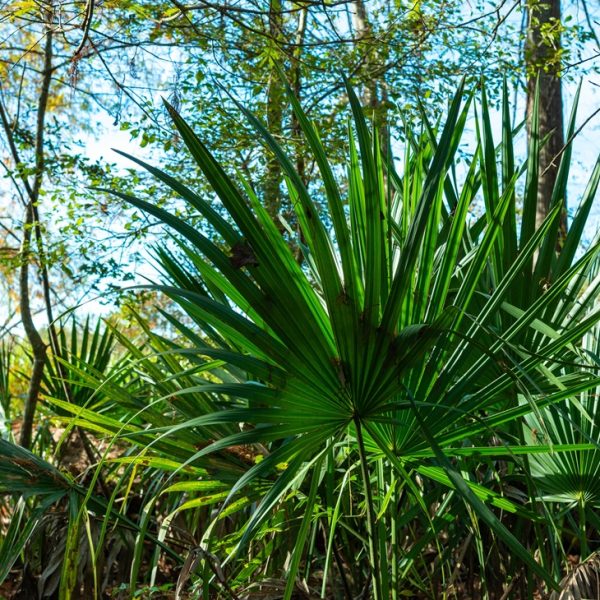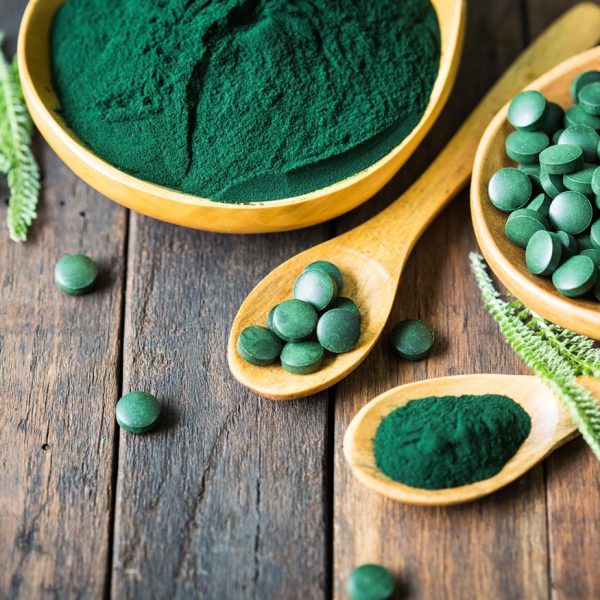-
How does it feel?
Usnea is bitter, neutral, cooling, drying and tonifying with a mild sweetness, in terms of taste quality. It has a slightly powdery texture when taken as a tea or tincture. A good quality extract will usefully be orange in colour, indicative of high levels of usnic acid, one of its primary constituents (1).
-
What can I use it for?

Usnea on birch tree (Usnea barbata) Usnea has many home herbalism applications for the treatment of acute respiratory conditions particularly for infections and to improve immune function. It also has a wide range of applications as a topical remedy for skin inflammations and infections (2).
The tincture or tea of usnea can be used to help overcome the symptoms of colds, flus, sinusitis, laryngitis and bronchitis. Usnea is well established as an antipyretic, which may be useful to employ in the treatment of a fever. It promotes immune function, which is vital for eliciting a healthy attack against infections of bacterial or vital nature (2).
Usnea reduces the congestive and inflammatory symptoms of viral and bacterial infections in the upper and lower respiratory system. It is specific where there is inflammation and congestion, particularly where there is hot, green or yellow phlegm. It helps to reduce the inflammation which causes a sore throat and it has a powerful action to open the airways due to its ability to clear phlegmatic accumulations. It is also through this action and its ability to reduce bronchial inflammation that it can help to address the associated wheezing that comes with respiratory infections (2, 3).
Usnea is sometimes used as an infused oil or salve for topical conditions as it has wound healing effects that can be applied to treat simple wounds such as scratches, cuts and grazes (4). It is a potent antimicrobial against gram positive bacteria, which makes it an excellent solution for reducing the risk of infection at the site of the wound.
It may also be useful for eczematous inflammations and skin damage caused by mastitis as an anti-inflammatory and vulnerary (2). The diluted tincture may also be used to help clean wounds or encourage healing in skin infections and inflammations. A diluted tincture is used as a throat or nasal spray (4) for infections or inflammation of the mucous membranes (5) The fresh lichen can be used a dressing for wounds if no sterile dressings are available when one finds themselves in the wild and is in need of a natural, antibacterial, healing plaster (1).
-
Into the heart of usnea

Usnea branch (Usnea barbata) Usnea has a complex energetic nature, which arises from its unique balance as a bitter, neutral and tonifying, slightly sweet medicine (1). Its energetic qualities are cooling and dry. The mild sweetness results from the presence of its polysaccharides. Through its cooling and drying actions, usnea helps tone, contract and tonify (4). It affects multiple systems, most specifically the reproductive, respiratory, lymphatic and immune systems (2).
It has a detoxifying action through its ability to remove heat and dampness in the tissues. It is often used where there are signs of excess heat due to irritation or infection. This herb has a specific affinity for the defence systems as it offers a wide range of actions against pathogens as well as being a tonic for the immune system (1, 4).
In traditional Chinese medicine (TCM) usnea is considered to address the lung and liver meridians. It clears toxic heat and reduces infection and inflammation throughout the body. It promotes expectoration, opens the airways, relieves wheezing and treats lung-wind heat whilst also reducing lung phlegm heat that is typical of upper and lower respiratory infections. In TCM usnea is also used as an immune system tonic that can support both acute and chronic immune deficiency (2).
-
Traditional uses

Usnea (Usnea barbata) Usnea has been used as a potent treatment for infections for thousands of years (6). The Greek physician Hippocrates prescribed usnea for the treatment of uterine and urinary disorders (1). It was also used traditionally to treat wounds and skin inflammations. Native Americans used it as a compress of the fresh lichen to prevent infection and gangrene of open wounds (7).
Usnea has a long history of use as medicine in Europe, Asia and Russia. Many such traditional indications for usnea relate to its antiseptic, anti-inflammatory and antipyretic effects for the treatment of fungal and bacterial infections (2).
In traditional unani medicine of India, usnea was used for heart conditions, inflammations, for promoting the appetite and digestive function. Its wound healing properties were also applied for inflammations relating to breastfeeding if applied as a paste on to the affected area. Other traditional indications include bladder infections, painful urination, urinary retention and oedema (8).
In TCM, usnea is so named song lo tea or decoction. It has been used traditionally as an internal and external medicine as a liver detoxifier, for malaria, wound healing, snake bites and coughs. The powder of the lichen has also been used for burns/wounds (9).
-
Traditional actions
Herbal actions describe therapeutic changes that occur in the body in response to taking a herb. These actions are used to express how a herb physiologically influences cells, tissues, organs or systems. Clinical observations are traditionally what have defined these actions: an increase in urine output, diuretic; improved wound healing, vulnerary; or a reduction in fever, antipyretic. These descriptors too have become a means to group herbs by their effects on the body — herbs with a nervine action have become the nervines, herbs with a bitter action are the bitters. Recognising herbs as members of these groups provides a preliminary familiarity with their mechanisms from which to then develop an understanding of their affinities and nuance and discern their clinical significance.
-
Traditional energetic actions
Herbal energetics are the descriptions Herbalists have given to plants, mushrooms, lichens, foods, and some minerals based on the direct experience of how they taste, feel, and work in the body. All traditional health systems use these principles to explain how the environment we live in and absorb, impacts our health. Find out more about traditional energetic actions in our article “An introduction to herbal energetics“.
Western energetics
Chinese energetics
-
What practitioners say

Usnea fungi (Usnea barbata) Immune system
One of the most well documented uses of usnea is as an anti-infective and antimicrobial medicine. Usnea may be effective against gram-positive bacterias such as streptococcus or staphylococcus, both of which commonly present as external, local or systemic and or internal manifestations. Usnea is believed to act by disrupting the microbial metabolism (5) It is specific for Helicobacter pylori infections. It is also an inhibitor of biofilm formation and its anti-inflammatory and mucous membrane tonic actions also contribute to its usefulness in treating infections whilst also addressing the accompanying tissue inflammation (1, 2).
Usnea has immuno-stimulant activities and acts as a systemic immune system tonic, which may be useful to employ in the treatment of viral infections. A number of actions have also been identified for usnea that may deem it useful in cellular health as it has cytotoxic and antioxidant activities (10). Some herbalists may use usnea as part of an integrative treatment approach for cancer along with very specific herbs to support lymphatic and immune health. The antineoplastic, anti-proliferative and antimitotic properties of usnea are involved contribute towards usnea’s anti-cancer action usnea’s (1). It is important to work alongside experienced oncology specialists whilst incorporating herbs as part of a holistic approach for cancer.
Due to its antifungal and antiparasitic activities usnea can be used internally and externally in the treatment of fungal infections, including tinea, parasitic, protozoal and trichomonas infestations (1, 3).
Respiratory system
Usnea is commonly used in the treatment of respiratory infections and inflammation. It may even be applied for in the treatment of more serious lung infections such as pneumonia (5), bronchitis (6) and tuberculosis (1) under the care of a qualified and experienced medical herbalist. Herbalists may offer support for mild–moderate cases but serious pneumonia may require hospitalisation.
Usnea is widely used for lung conditions as an anti-inflammatory that may help to address the symptoms of asthma. It works by reducing accumulations, reducing wheezing in the lungs as well as by reducing inflammation (2).
Digestive system
Usnea may be used for a number of digestive conditions including for gastric ulcers, digestive weakness and atony in the upper and lower digestive tract. The German Commission E monograph has approved usnea in the treatment of mild inflammation of the oral pharyngeal mucosa. It is also suitable for use where there is mucous membrane dysfunction in the digestive tract, gastric inflammation, stomach weakness, diarrhoea, dysentery, and haemorrhage (1, 5).
Skin and mucous membrane conditions
One of usnea’s most traditional uses is for the treatment of skin inflammations and infections. A helpful first aid herb, which may also be considered for more serious skin infections including for outbreaks of staphylococcus infection or infected wounds. This can be applied topically as a powdered herb or as a diluted tincture alongside dosage of usnea tincture or extracts to address the potentially systemic nature of infections (5)
Usnea may be used for bacterial, fungal and viral skin infections such as impetigo, ringworm, athlete’s foot and ulcerations, conjunctivitis, sore and strep throat and sinus infections. It may also be useful as a topical agent to help address acne, cellulitis and eczema providing the correct systemic, internally treatments is addressed at the same time (1). Usnea’s wound healing effects make it useful for the topical treatment of burns and to assist in the healing of surgical incisions from plastic surgery (1).
Gentio-urinary system
Usnea may also be used for urinary tract infections (1). It also has some references for use in treating vaginal infections such as candida and vulvo-vaginitis for use as a peri-wash or in sitz bath (11).
-
Research

Usnea fungus (Usnea barbata) There are currently no clinical trials on usnea. However, a literature review was carried out to analyse the available pharmacological and traditional literature surrounding its medicinal actions. This review examined a selection of studies in which usnea extracts exhibited potent antibacterial activities. The studies demonstrated that gram-positive bacterias (Staphylococcus aureus, Bacillus subtilis, Bacillus cereus, and Mycobacterium tuberculosis) and aquatic oomycetous fungi were the most sensitive usnea. extracts. The review also identified moderate activity against Malassezia furfur and dermatophytes. Gram-negative bacterias, yeast, and fungi were more positively resistant to usnea extracts (included Escherichia coli, Candida sp., Saccharomyces cerevisiae, and Aspergillus sp.) (12).
Another study was carried out to analyze the phytochemical profile and to evaluate the antioxidant and cytotoxic potential of usnea extracts. This study demonstrated significant antioxidant activities particularly in the methanol extract, and all of the extracts analysed showed potent cytotoxic effects. This study suggests that the aqueous extract presented with the lowest cytotoxicity due to the lower solubility of usnic acid in this solvent (10).
Research has also been carried out on one of usnea’s primary compounds, usnic acid. Both vitro and in vivo models suggest antioxidant, anti-inflammatory, antimicrobial, anti-proliferative and burn-healing properties (9). A small clinical study was also carried out to investigate the effects of usnic acid and zinc sulphate on one hundred patients affected by human papillomavirus (HPV) genital infection via intravaginal administration. The results of this study established favourable effects against HPV in which 100% of the treatment group experienced complete disappearance of HPV lesions. The long term treatment also reduced recurrence of HPV lesions (13).
These works afford us a deeper insight into the medicinal activities of this fascinating lichen and show it has significant potential beyond many of its current uses.
-
Did you know?
Lichens are neither truly plants nor fungi — they are not singular organisms, but composite organisms, formed by the symbiotic relationship between an algae and a fungus (14).
Usnea, like other beard lichens, has been used in the making of natural dyes, to create orange and yellow textiles. In bushcraft, beard lichen can be used as a tinder fire-starter due to its flammability when dry and crisp (7).
Additional information
-
Botanical description
Usnea is a beard lichen that has soft greyish green in colour. As with other lichens it is parasitic which can be detrimental to the host. Identification is confirmed if there is an ‘internal cord’ or cortex, running from the attachment point, down into the strands; when wet, it stretches like elastic. There are other lichens which look similar. It can develop an orange hue in summer to autumn which indicates higher levels of usnic acid, making it an ideal time to harvest. The more healthy the air quality the better and longer they grow. They may grow from 2–3 cm up to 20 cm in ideal environments (1).
-
Common names
- Old man’s beard
- Tree lichen
- Beard lichen
- Lungs of the forest
- Oak moss
- Tree moss
- Witches broom
-
Safety
Usnea is not recommended for use during pregnancy. Safety levels for breastfeeding are not clear, therefore ingestion is not recommended (1).
Usnea may cause contact dermatitis for some. Rarely, usnea can cause a dermatitis-like reaction with topical use, this is more likely to happen if the raw herbal material being applied is very dry. If a skin reaction occurs, discontinue use (5).
-
Interactions
Usnea potentiates the drug clarithromycin’s function (1).
-
Contraindications
Usnea has no known contraindications (other than pregnancy) as is considered a very safe herbal medicine (6).
-
Preparations
- Fresh
- Dried
- Tincture
-
Dosage
Tincture (1:5 in 45%): Take between 2–4 ml in a little water up to three times a day.
Infusion: To make an infusion of usnea place 10–20 g of dried material into one cup of boiling water, infuse for 10 minutes. This should be drunk cool, three times a day (2).
As a lotion or salve: An external application should be applied up to three times a day for skin conditions or for treatment of skin inflammations and wounds.
-
Plant parts used
Whole lichen (dried thallus)
-
Constituents
- Polysaccharides including isolichenin, raffinose
- Anthraquinones
- Amino acids
- Mucilage
- Carotene
- Vitamins including high levels of vitamin C
- Acids, including usnic acid, fatty acids, vulpinic acid, usnaric acid, thamnolic acid, lobaric acid, stictinic acid, evernic acid, diffractaic acid protolichesterinic acid, a number of orcinol derivatives, longissiminone A and B, glutinol, ethyl hematommate, friedelin, beta-amyrin, beta-sitosterol, methyl-2,4-dihydroxy-3,6-dimethylbenzoate, barbatinic acid, 4-O-demethylbarbatic acid, zeorin, ethyl orsellinate, 3-beta-hydroxy-glutin-5-ene, oleanolic acid, methylorsellinate, 4-methyl-2,6-dihydroxy-benzaldehyde, dibenzofuran, anthraquinone, hirtusneanoside, menegazziaic acid, stictic acid, glyceryl trilinolate
- Phenolic compounds (1)

-
Habitat
Usnea prefers to grow in fruit trees, oaks, pines, Douglas fir and other forest trees (1).
-
Sustainability
Usnea is not yet included in the IUCN red list of endangered species. However, it is commonly understood that the habitats of beard lichens due to the decline in native mature woodlands. This species is affected by air pollution (1).
Habitat loss and over-harvesting from the wild are two of the biggest threats faced by medicinal plant species. There are an increasing number of well-known herbal medicines at risk of extinction. We must, therefore, ensure that we source our medicines with sustainability in mind.
The herb supplement industry is growing at a rapid rate and until recent years a vast majority of medicinal plant produce in global trade was of unknown origin. There are some very real and urgent issues surrounding sustainability in the herb industry. These include environmental factors that affect the medicinal viability of herbs, the safety of the habitats that they are taken from, as well as the welfare of workers in the trade.
The botanical supply chain efforts for improved visibility (transparency and traceability) into verifiably sustainable production sites around the world is now certificated through the emergence of credible international voluntary sustainability standards (VSS).
Read our article on Herbal quality & safety: What to know before you buy and Sustainable sourcing of herbs to learn more about what to look for and questions to ask suppliers about sustainability.
-
Quality control
In autumn usnea contains the highest levels of usnic acid — one of its primary constituents. It is the usnic acid that gives the extraction its orange colour. This is an indication that it is the best time to harvest (1).
Herbal medicines are often very safe to take, however, it is important to buy herbal medicines from a reputed supplier. Sometimes herbs bought from disreputable sources are contaminated, adulterated or substituted with incorrect plant matter.
Some important markers for quality to look for would be to look for certified organic labelling, ensuring that the correct scientific/botanical name is used and that suppliers can provide information about the source of ingredients used in the product.
A supplier should be able to tell you where the herbs have come from. There is more space for contamination and adulteration when the supply chain is unknown.
-
How to grow
Usnea grows in the correct environment and conditions naturally. The best location is in the wild or in a mature and established garden. The spores land on tree branches and if it is a suitable habitat with good air quality it will grow, attached to tree branches.
If you are looking to grow usnea ensure the correct environment is on offer for the best chance of success.
You can attempt to transplant lichen from one tree to another. Ensure that when transplanting mosses and liverworts, keep them moist at all times using an atomiser and clean water. It is also important to keep the area damp and shaded to encourage them to establish in their new location. Never take lichens from the wild, or without the landowner’s permission (14). You may attach the lichen to the tree using a small amount of grafting wax made up of a mixture of linseed oil and bee’s wax around the root area of your specimen (15).
-
Recipe

Usnea tincture (Usnea barbata) Usnea tincture
Tinctures are an excellent way to extract and preserve the medicinal properties of herbs. They are made using an aqueous-ethanolic solvent or in the making of home tinctures- often just an alcoholic spirit (brandy or vodka are commonly used).
Ingredients / equipment
- Fresh or dried usnea
- 25–50% proof alcohol (e.g. vodka)
- Mason jar
- Mesh strainer or cheesecloth (muslin)
- Amber glass bottle
- Labels and permanent marker
Method
- Grind or chop the usnea finely. Note: Caution should be taken to wear a mask as the usnea powder can be highly irritating if inhaled.
- Add to mason jar and cover with 250 ml of 50% alcohol.
- If fresh, the fluid content in the usnea will dilute the alcohol by around half and so it’s important for preservation that the alcohol stays above 20% proof.
- Label the jar with the date and ingredients.
- Leave to macerate (infuse) in a cool and dark place away from sunlight for between 2–4 weeks, gently shaking/ turning daily for the first week.
- Strain your tincture using the sterile mesh strainer or muslin cloth and place the liquid into your glass bottle.
- Label your tincture with the date and ingredients. Example: Usnea tincture, free / dried, 10th November 20XX, 1:2.5 @ 45% ABV
-
References
- Gilmour K. Lichen: Usnea barbata & other species. Herb Federation of New Zealand. Published 2021. Accessed May 24, 2024. https://herbs.org.nz/site/assets/files/2270/lichen_-_usnea_barbata-1.pdf
- Holmes P. The Energetics of Western Herbs: Treatment Strategies Integrating Western and Oriental Herbal Medicine. Snow Lotus Press; 2006.
- Menzies-Trull C. Herbal Medicine Keys to Physiomedicalism Including Pharmacopoeia. Faculty Of Physiomedical Herbal Medicine; 2003.
- Usnea – Florida School of Holistic Living. Florida School of Holistic Living. Published November 1, 2022. Accessed May 22, 2024. https://www.holisticlivingschool.org/2022/11/01/plant-profile-usnea/
- Usnea Monograph. HerbRally. Accessed May 23, 2024. https://www.herbrally.com/monographs/usnea?_ga=2.144684021.175095353.1716373070-1554095963.1716373070
- Notes from Patricia BotanoLogos School of Herbal Studies. Accessed May 23, 2024. http://wildhealingherbs.com/wp-content/uploads/2019/12/UsneaMonograph_BotanoLogos_updated12.29.19.pdf
- Trust W. Beard Lichens (Usnea species). Woodland Trust. Accessed July 9, 2024. https://www.woodlandtrust.org.uk/trees-woods-and-wildlife/fungi-and-lichens/beard-lichens/
- Singh H. The genus Usnea: A potent phytomedicine with multifarious ethnobotany, phytochemistry and pharmacology. RSC Adv. 2016;6. Accessed June 4, 2024. https://www.researchgate.net/publication/292212820_The_genus_Usnea_A_potent_phytomedicine_with_multifarious_ethnobotany_phytochemistry_and_pharmacology
- Food and Drug Administration, Division of Dietary Supplement Programs. NTP Nomination for Usnic Acid and Usnea Barbata Herb. National Toxicology Program; January 2005.Published 2005. Accessed June 5, 2024. https://ntp.niehs.nih.gov/sites/default/files/ntp/htdocs/chem_background/exsumpdf/usnicacid_508.pdf
- Popovici V, Bucur L, Popescu A, et al. Antioxidant and Cytotoxic Activities of Usnea barbata (L.) F.H. Wigg. Dry Extracts in Different Solvents. Plants. 2021;10(5):909. doi:10.3390/plants10050909
- Romm A, Clare B, Alschuler L, Hobbs C, Upton R. CHAPTER 8 – Vaginal Infections and Sexually Transmitted Diseases. ScienceDirect. Published January 1, 2010. Accessed May 28, 2024. https://www.sciencedirect.com/science/article/abs/pii/B9780443072772000106?via%3Dihub
- Sepahvand A, Studzińska-Sroka E, Ramak P, Karimian V. Usnea sp.: Antimicrobial potential, bioactive compounds, ethnopharmacological uses and other pharmacological properties; a review article. Journal of Ethnopharmacology. 2021;268. Accessed May 5, 2024. https://www.sciencedirect.com/science/article/pii/S0378874120335443
- Scirpa P, Scambia G, Masciullo V, et al. [A zinc sulfate and usnic acid preparation used as post-surgical adjuvant therapy in genital lesions by Human Papillomavirus]. Minerva Ginecologica. 1999;51(6):255-260. Accessed June 5, 2024. https://pubmed.ncbi.nlm.nih.gov/10479878/
- Algae, lichens, liverworts and moss. Royal Horticultural Society. Accessed July 9, 2024. https://www.rhs.org.uk/biodiversity/algae-lichens-liverworts-moss
- Steele B. A Systematic Review of Translocation Methods in Lichens. Accessed June 5, 2024. https://research-scotland.ac.uk/server/api/core/bitstreams/fc4846e8-08a3-4bc6-89ce-44e26b4b2e21/content

